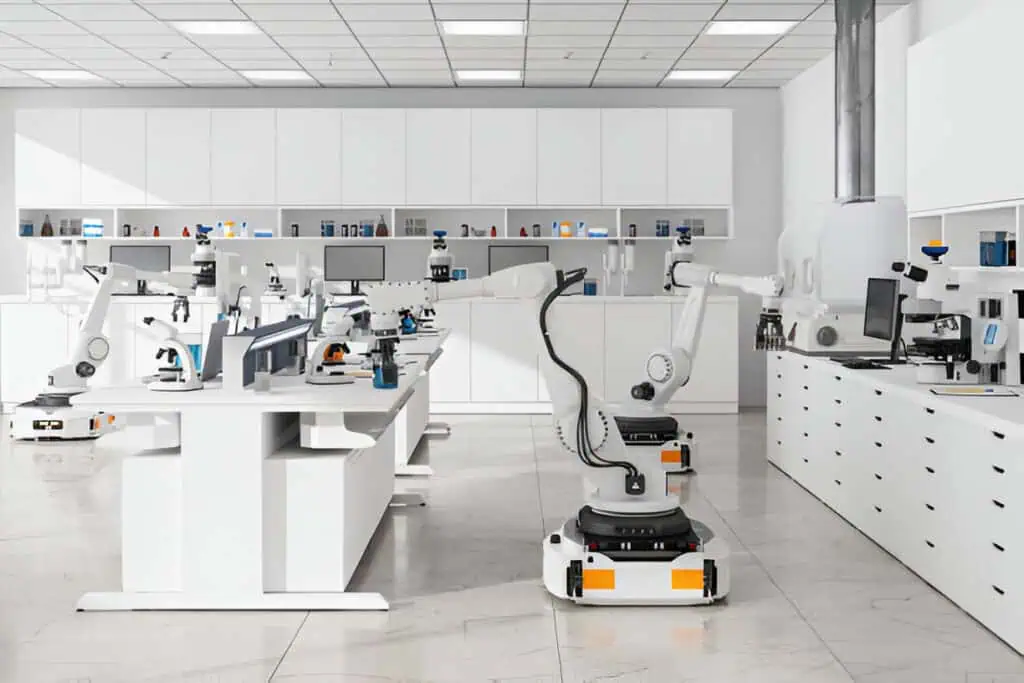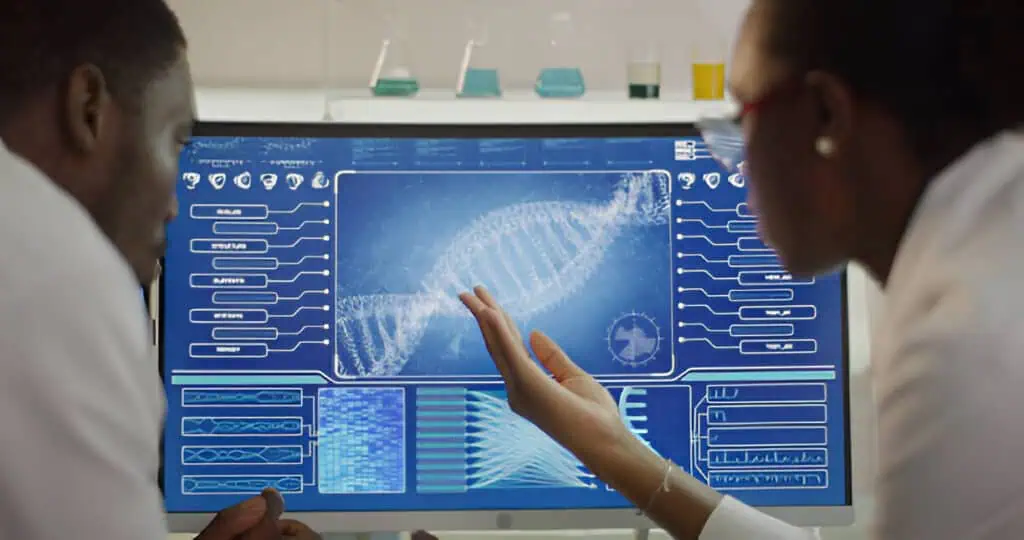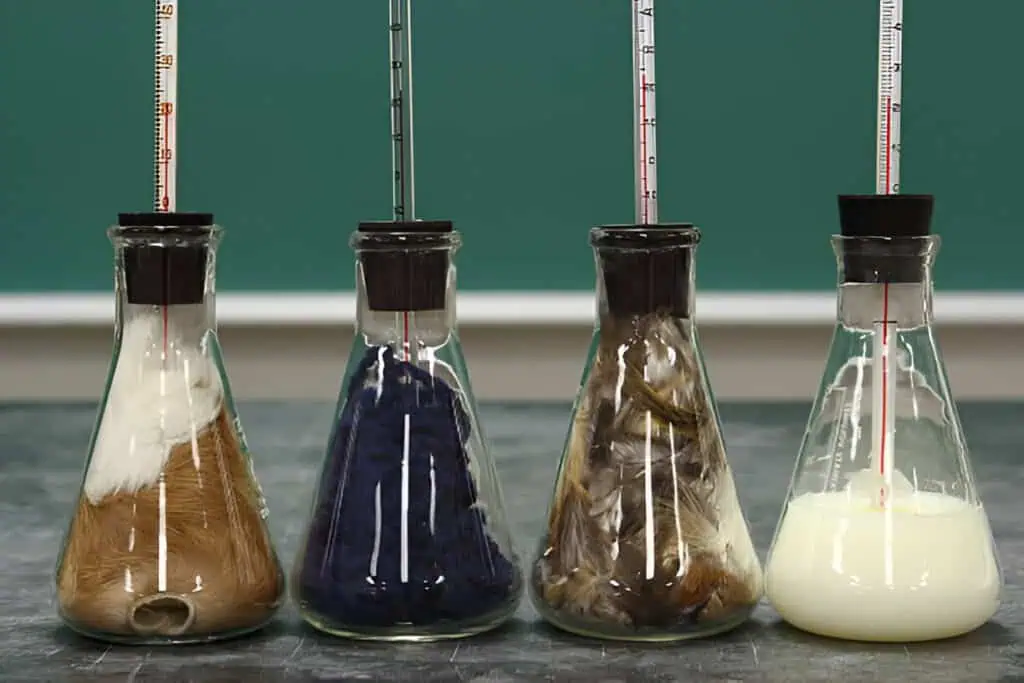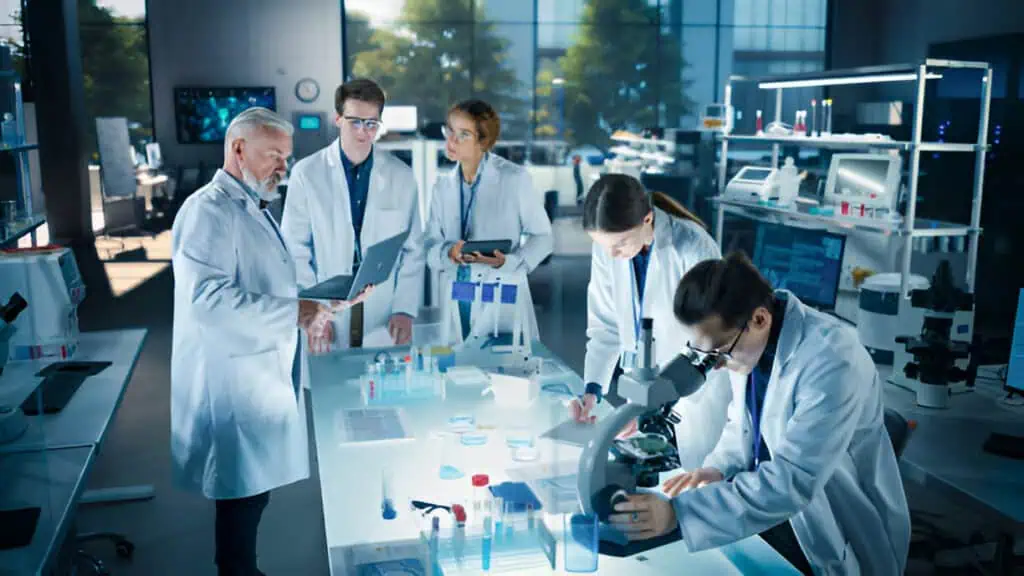In the dimly lit confines of a laboratory, where the hum of centrifuges and the glow of computer screens dominate, a quiet revolution unfolds. Lab scientists, often stereotyped as mere technicians peering through microscopes or pipetting samples, are in fact the unsung architects of modern breakthroughs. Consider the rapid development of mRNA vaccines during the COVID-19 pandemic: it wasn’t just high-profile researchers like Katalin Karikó and Drew Weissman who made it possible, but an army of lab scientists who optimized protocols, analyzed data, and iterated experiments in real time. These professionals bridge the gap between theoretical science and tangible innovation, transforming abstract ideas into life-saving technologies. Yet, their contributions extend far beyond routine tasks; they drive interdisciplinary collaborations, leverage cutting-edge tools like artificial intelligence (AI), and push the boundaries of fields from medicine to materials science.
This article delves into the multifaceted roles of lab scientists, exploring how they fuel research and innovation in an era of rapid technological change. Drawing on recent advancements and real-world examples, we’ll examine their evolving responsibilities, the technologies amplifying their impact, and their pivotal contributions across key domains. By highlighting specific case studies from AI-accelerated drug discovery to sustainable biofuels, we aim to illuminate how lab scientists are not just participants in science but its primary catalysts. In a world facing complex challenges like climate change, pandemics, and chronic diseases, understanding their work is essential to appreciating the full spectrum of scientific progress.
The Evolving Role of Lab Scientists

Historically, lab scientists, encompassing technicians, researchers, and analysts, were seen as support staff, executing protocols designed by principal investigators. Today, however, their role has transformed into one of active innovation and leadership. This shift is driven by the increasing complexity of scientific questions, which demand hands-on expertise in data interpretation, experimental design, and problem-solving. For instance, in biomedical research, lab scientists now integrate multi-omics data combining genomics, proteomics, and metabolomics to build comprehensive models of disease. This deep phenotyping allows for the construction of causal networks, where genetic variations link to molecular profiles, enabling more precise diagnostics and therapies.
A strategic framework for impactful laboratory science emphasizes producing high-quality innovations while empowering interdisciplinary teams. Lab scientists are no longer siloed; they collaborate with engineers, clinicians, and data scientists to translate findings from bench to bedside. Take the example of precision medicine, where lab professionals stratify patients into subpopulations based on biological markers, ensuring treatments are tailored to individual needs. This patient-centric approach has revolutionized healthcare, moving away from one-size-fits-all models.
Moreover, lab scientists contribute to healthier research environments by fostering collaboration and well-being. Simple rules for nurturing labs, such as promoting open communication and work-life balance, enhance productivity and creativity. In emerging economies, where resources may be limited, these professionals adapt innovative tools like autonomous experimentation (AE) systems, which automate high-throughput experiments to accelerate discoveries in drug development and nanomedicine. Such adaptations not only democratize science but also address global health disparities.
The impact is evident in real-time scenarios. During fast-moving events like disease outbreaks, lab scientists conduct epidemiological studies, providing data for vaccination strategies. Their work extends to public health, where they analyze billions of pathology tests annually, guiding clinical decisions and preventing illnesses. This evolution underscores that lab scientists are integral to innovation, blending technical prowess with strategic insight to advance knowledge.
Technological Advancements Amplifying Lab Innovation

The integration of technology has supercharged lab scientists’ contributions, turning traditional workflows into efficient, data-driven engines of discovery. Automation and robotics streamline repetitive tasks, allowing scientists to focus on high-level analysis and creativity. For example, AI and machine learning algorithms now scour vast datasets from research papers to clinical trials to uncover hidden relationships between genes, drugs, and diseases. Tools like BenevolentAI exemplify this, digesting millions of publications to identify novel therapeutic targets, far beyond human capacity.
In laboratory settings, AI automates routine processes, such as sample analysis in clinical chemistry, enhancing accuracy and speed. Self-driving laboratories, or AE systems, represent a pinnacle of this trend: these platforms run thousands of experiments autonomously, optimizing conditions for new materials or compounds with minimal human intervention. In biomedicine, they accelerate drug discovery by screening combinations efficiently, impacting areas like precision oncology.
Digitalization, however, presents a paradox: while it boosts efficiency, it reshapes everyday scientific labor, sometimes increasing workload through constant data management. Lab scientists mitigate this by leveraging computational biology and bioinformatics, where algorithms analyze biological data to predict outcomes. For instance, sensor technologies enable real-time data collection at the molecular level, advancing genomics and neuroscience.
Point-of-care testing (POCT) devices, miniaturized through microfluidics and bioengineering, bring lab capabilities to the bedside, narrowing the clinical-laboratory gap. These innovations, combined with electronic tools like smartphone integrations, improve accessibility in remote areas. On X (formerly Twitter), discussions highlight AI as a “scientific partner,” revolutionizing research by assisting in every step, from hypothesis generation to data interpretation.
Programs like the Strategic Program for Innovation at National Labs (SPIN) equip scientists with entrepreneurial tools to conceptualize solutions. In esports research labs, for example, scientists translate data into health strategies for athletes, blending biology with technology. These advancements not only enhance efficiency but also foster a culture of continuous innovation, positioning lab scientists at the forefront of technological integration.
Contributions to Medicine and Biology

In medicine and biology, lab scientists’ innovations have profoundly enhanced healthcare outcomes. Their work in precision medicine leverages deep clinical phenotyping and molecular profiling to create tailored treatments. For example, genome-wide association studies (GWAS) and epigenetics help construct models linking genomic regions to disease pathways, enabling predictive diagnostics.
A landmark contribution is CRISPR-Cas9 gene editing, where lab scientists refined techniques for precise DNA modifications, leading to treatments for genetic disorders like sickle cell anemia. In 2024, approved CRISPR therapies marked a mainstream shift in clinical gene editing. Similarly, mRNA technology, pioneered through rigorous lab optimization, enabled rapid vaccine development, saving millions during pandemics.
Lab scientists in cell sciences analyze diseased tissues to uncover mechanisms, advancing cytology and histopathology. Stem cell research, such as Doug Melton’s work on beta cell replacements for diabetes, uses implantable devices to restore insulin production, potentially curing the disease. In vivo and ex vivo studies further these efforts, testing therapies in controlled environments before human trials.
Infectious disease research benefits from lab innovations in virology and microbiology. During outbreaks, scientists provide data for strategies like those against Ebola or Zika. Recent X posts highlight breakthroughs, such as Weizmann Institute’s leukemia research amid adversity, publishing despite missile strikes. Multi-omics approaches, including single-cell profiling, generate comprehensive biological models, aiding in biomarker discovery for cancer and autoimmune diseases.
Biopharmaceuticals, like bi-specific antibodies for cancer and oligonucleotide therapeutics for genetic conditions, stem from lab-driven advancements. In emerging fields, AI agents in decentralized science (DeSci) help identify research gaps, accelerating innovations. These contributions underscore lab scientists’ role in translating biology into actionable health solutions, improving patient lives globally.
Innovations in Chemistry and Materials Science

Lab scientists in chemistry propel innovations that underpin biomedical and industrial advancements. Chemical biology enables the design of probes for drug target profiling, facilitating therapies for complex diseases. Analytical tools like nuclear magnetic resonance (NMR) spectroscopy and mass spectrometry characterize biomolecules, aiding in vaccine development and biomaterials creation.
In materials science, lab innovations yield biodegradable alternatives to plastics, using bacterial processes for biofuels like ethanol and methane. Medicinal chemists synthesize compounds for targeted drugs, such as methotrexate adaptations for blood cancer. Pioneers like C.V. Raman’s scattering effect revolutionized molecular analysis, influencing chemistry and medicine.
Industrial biotechnology harnesses enzymes for sustainable processes, from textiles to packaging, reducing environmental impact. In nuclear physics, figures like Homi J. Bhabha laid foundations for energy innovations, extending to medical isotopes. These efforts highlight how chemical lab work drives eco-friendly and health-focused materials.
Interdisciplinary Collaboration and Commercialization

Lab scientists thrive through collaboration, cross-fertilizing ideas across disciplines. National labs like Berkeley exemplify this, touring facilities to showcase innovations in energy and computing. Commercialization bridges research to market, with guides on funding and pitch decks aiding startups.
Programs like SPIN foster entrepreneurship, turning lab discoveries into products. In Pakistan, NIAB’s IAEA status advances agricultural research from lab to field. Students like Beth Ryan engage with Nobel laureates, sparking global collaborations. This ecosystem ensures innovations reach society, from Walmart’s health centers to biotech mergers.
Challenges and Future Directions
Despite progress, challenges persist: digitalization can overwhelm workflows, and resource gaps in emerging economies hinder adoption. Ethical regulations in AE and AI demand careful navigation.
Future directions include AI as collaborative partners and expanded multi-omics for personalized care. Engaging with real-world science through outreach will inspire the next generation. By addressing these, lab scientists will continue driving equitable innovation.
Conclusion
Lab scientists transcend the microscope, weaving technology, collaboration, and ingenuity into the fabric of progress. From AI-accelerated discoveries to life-altering therapies, their work reshapes medicine, chemistry, and beyond. As we face future uncertainties, investing in these innovators is crucial ensuring science serves humanity’s greatest needs. Their legacy? A world where innovation is not just possible, but inevitable.














